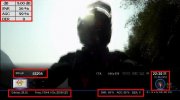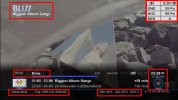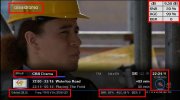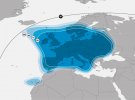I don't have the "old" values from yesterday to hand, but on my Vu+ Duo2 receiver this is the quality & strength levels I'm currently getting with a Zone 2 dish fed into a 10/1 diseqc switch...
11307 H - 14.4db 79%
11307 V - 13.8db 79%
11343 V - 13.5db 84%
11344 H - 14.3db 79%
As a comparison, the remaining multiplexes on the E28A super beam have these levels...
11222 H - 11.7db 74%
11224 V - 11.3db 79%
11260 V - 11.8db 79%
11261 H - 11.2db 74%
11389 H - 9.1db 74%
11390 V - 11.4db 74%
11426 V - 10.9db 74%
11428 H - 9.2db 69%
Then there are these levels from two multiplexes on the E28A spot beam 1...
11662 H - 9.7db 69%
11681 V - 12.7db 69%
As a comparison I have the following levels from 2F on the Pan-European beam, the first three was originally transferred over from 2A with the >12.5GHz signals "taken over" from Eutelsat about 18 months ago...
12207 V - 12.6db 79%
12266 H - 13.2db 79%
12304 H - 13.3db 79%
----------------
12520 V - 12.3db 69%
12545 H - 13.8db 69%
12552 V - 12.1db 69%
12604 H - 13.4db 69%
12610 V - 12.3db 69%
12633 H - 13.5db 69%
12640 V - 12.0db 69%
12633 H - 13.3db 74%
12670 V - 12.1db 69% (DVB-S2)
All signals from the 2F & 2E UK spot beams other than those in the 11.2-11.45GHz band have a S/N level of 14.9db or better - the tuner meter tops out at this mark. This includes the temporary BBC Red Button multiplex on 12442 H. AGC is between 84-91%.
If the four multiplexes that transferred over from E28A to 2F this morning are on the UK spot beam, the lower S/N levels comparable to other spot beam signals might be down to cross-polarisation needing the LNB to be skewed properly, to the best of my knowledge the 2F satellite has a skew offset while E28A doesn't, and I know when I set the Zone 2 dish up originally I set the skew primarily for E28A signals. It could also be the case that since these transferred multiplexes are transmitting on frequencies a few MHz off the standard Astra bandplan, it could be that the transponder's available bandwidth is being pushed on offsets not normally intended for it and with a roll-off at the edges forcing current signals to be transmitting at lower power than they are capable of - but this doesn't explain that in this Astra "A" band normally transmissions from the Astra fleet in this frequency range tend to use SRs of 22000 or 23000 depending on wherever DVB-S or DVB-S2 is used, whereas at the moment these multiplexes use a SR of 27500 which Astra doesn't normally do - maybe using a higher SR than normal is pushing the transponders to work at bandwidths at these frequencies wider than normal and again working at lower levels than normal. I wonder if these new Astra satellites have SDR capabilities for downlink transmissions? I suspect we may see some temporary frequency shifting of some multiplexes happen to allow them to eventually adhere to the main Astra band plan like what was done when the first services from E28A to 2F was first done in the 11.45-11.7 GHz and the 12.5-12.75GHz bands. There does appear to be frequency space available at present at 28E to do this juggling around of services.
Once it is complete, I'm thinking of just adding another offset LNB on my 80cm dish aimed at Hot Bird for 28 East if the signal levels are in the end strong enough across the board, with the Zone 2 dish maybe reused for more eastern satellites (Turksat?) Otherwise I might dig out the spare Zone 1 dish instead of the offset LNB.





